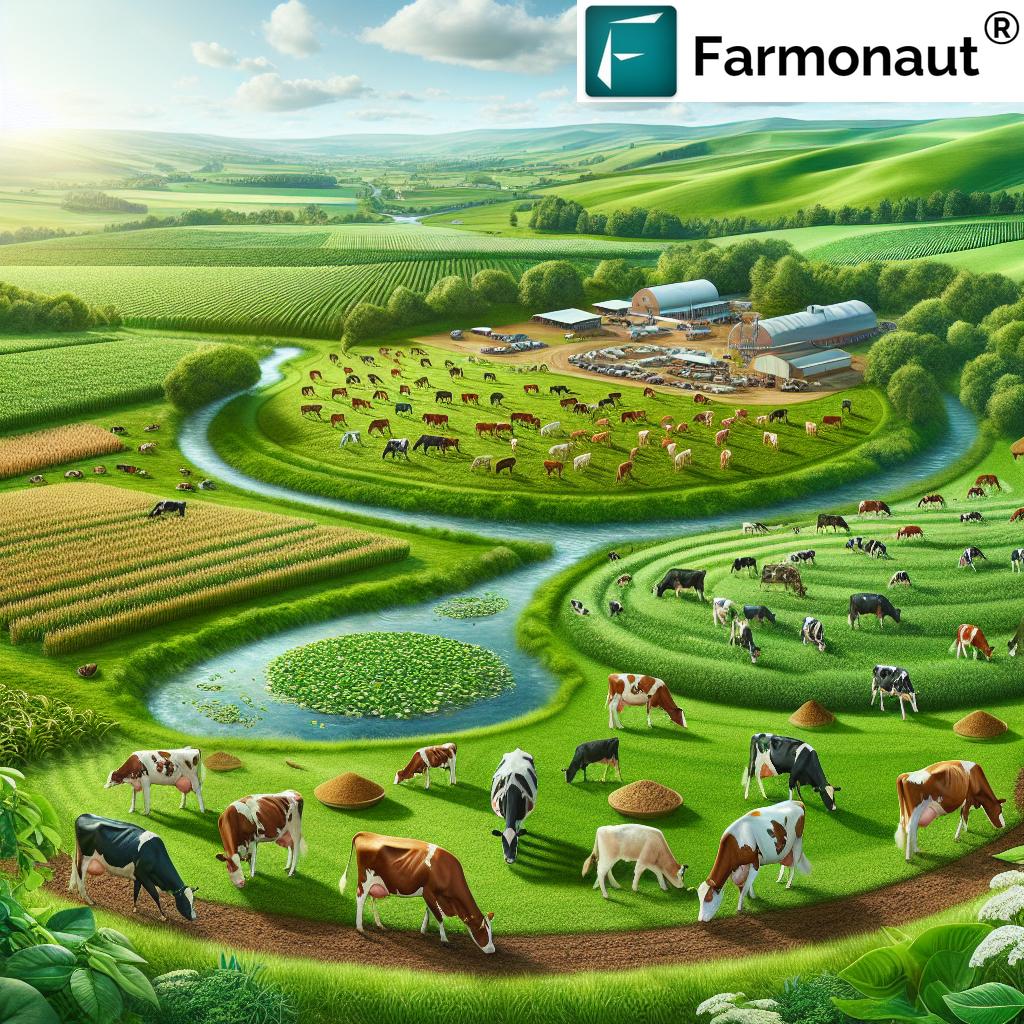All Pest, Alliance Pest: Advanced Bell Pepper Pest Control – Innovations and Strategies in Pest Management for Bell Pepper Cultivation in 2025
“In 2025, over 70% of bell pepper farms will adopt advanced pest control technologies for sustainable cultivation.”
Introduction: Bell Pepper Pest Control Evolution in 2025
Bell peppers (Capsicum annuum) are prized not only for their flavor and nutrition but also for their economic value in global agriculture. However, bell pepper plant pests – from aphids and thrips to caterpillars and mites – remain a critical challenge for farmers and agribusiness. In 2025, the landscape of pest management has transformed due to sustainable innovations, precision technologies, and an urgent demand for environmentally responsible practices.
This comprehensive article explores new dimensions of bell pepper cultivation, highlighting the integrated approaches of all pest management, alliance pest management, and alleviation pest control. We delve into the advanced technological methods that optimize interventions, reduce chemical use, enhance crop yield and quality, and safeguard both environmental and economic sustainability for 2025 and beyond.
Understanding Bell Pepper Plant Pests: Species, Impact, and Complexity
All pest, alliance pest management, alleviation pest control, and advance pest strategies begin with an understanding of the diverse pest populations that threaten bell pepper crops. Bell pepper plant pests – especially in 2025 – include a wide array of insect and mite species:
- Aphids: Like green peach aphids and cotton aphids, these soft-bodied insects damage leaves, stems, and fruits, leading to deformed growth and reduced yield. They act as vectors for viral diseases.
- Whiteflies: Small but damaging to both young and mature plants, causing chlorosis, leaf drop, and transmitting plant viruses.
- Thrips: Such as Western flower thrips, feeding on leaves and fruits, causing scarring and silvering. Thrips also vector tospoviruses, impacting productivity and market quality.
- Spider mites: Two-spotted spider mite is particularly severe in dry, warm conditions, leading to leaf bronzing and loss.
- Caterpillars: Including pepper weevil, fruit borers (like tomato fruit borer Helicoverpa armigera), and armyworms – larvae that tunnel into fruits and stems, directly reducing yield.
Bell pepper pests exploit the complexity of modern agriculture, thriving on monocultures and rapidly moving across farming systems. The interaction of these pest communities, the environmental cycles they rely on, and their roles as disease vectors make integrated, holistic management essential.
In 2025, farmers face added complexities from climate change, which can expand pest ranges and alter life cycles, further novel strategies to address pest outbreaks.
All Pest Management: Building a Holistic Framework
The “all pest” concept represents a holistic approach to pest management that transcends the targeting of individual species. Instead, it considers the entire pest community – their interactions, life cycles, and their environmental impact on bell pepper crops.
Core Principles of All Pest Management for Bell Peppers
- Integrated Pest Management (IPM): Combining biological, physical, chemical, and cultural methods to suppress all pest populations and reduce resistance development.
- Population Monitoring: Use of advanced sensors and data analytics to track pest outbreaks and evaluate community-level changes.
- Environmental Alleviation: Minimizing negative environmental impacts while maintaining effective pest suppression.
- Synergistic Tactics: Deploying combinations of biological and technical solutions for long-term, resilient management.
This all pest framework addresses the challenge of emerging resistance, reducing reliance on chemicals, and supports sustainable bell pepper production in a climate-sensitive context.
Alliance Pest Management in Bell Pepper Cultivation – Collaboration and Early Warning
One of the most promising advances for bell pepper pest control in 2025 is alliance pest management. This collaborative network brings together farmers, researchers, extension workers, and policymakers to address all pest and alleviation pest control collectively across regions.
How Alliance Pest Management Networks Function
- Real-Time Data Sharing: Utilizing mobile applications, cloud-based systems, and IoT-enabled sensors, farmers collectively track pest outbreaks and report data, enhancing accuracy.
- Joint Monitoring: Regular regional field scouting, supported by multispectral satellite imagery for synoptic pest pattern detection, enables area-wide strategic control.
- Coordinated Intervention: Scheduling timely, synchronized actions (such as pheromone trap deployment, release of biological control agents, or precision application of biopesticides) to optimize pest suppression and reduce chemical inputs.
- Cooperative Forecasting: Sharing historical and real-time data boosts pest forecasting and supports early warning systems for outbreaks – especially important for damaging pests like thrips, whiteflies, and fruit borers.
In alliance pest management, collaboration enhances both efficiency and effectiveness of field-level interventions. It reduces the risk of pest migration between neighboring farms, prevents chemical overuse, and helps maintain viable populations of beneficial natural enemies.
Notably, digital farm management platforms (including those powered by satellite imagery, IoT, and AI) have vastly improved the speed and accuracy of data sharing in 2025.
Benefits of Alliance Pest Management for Bell Pepper Farmers
- Enables regional outbreak suppression, lowering the chances of catastrophic losses.
- Reduces chemical load and enhances adoption of sustainable pest management methods.
- Empowers small farmers through shared knowledge, increasing their resilience.
- Improves coordination between research, extension, policy, and field-level activity.
For those managing expansive bell pepper farms or regional clusters, adopting a large-scale farm management platform provides real-time collaboration, unified pest monitoring, and data-driven decision tools optimized for alliance pest management environments.
Alleviation Pest Control: Sustainable, Targeted Bell Pepper Interventions
Alleviation pest control strategies are central components of integrated, sustainable agriculture. In 2025, alleviation tactics emphasize targeted interventions that minimize environmental impact and bolster populations of natural enemies of bell pepper pests.
Principal Alleviation Pest Control Strategies
-
Biological Control Agents:
- Predatory insects like lady beetles and parasitic wasps (e.g., Trichogramma sp.) target pest eggs and larvae.
- Entomopathogenic fungi and nematodes, applied as biopesticides, specifically target bell pepper pest populations such as whiteflies, thrips, and caterpillars, while sparing beneficial insects.
-
Habitat Management & Intercropping:
- Planting companion crops like marigolds, which deter nematodes and some insect pests from bell pepper rows.
- Integrating flowering strips or hedge rows to supply nectar to pollinators and pest predators.
- Disruption of pest life cycles reduces the need for frequent chemical interventions.
-
Botanical and Microbial Biopesticides:
- Use of neem oil or Bacillus thuringiensis for targeted control of caterpillar species.
- Silicon-based biostimulants strengthen plant cell walls, making plants less susceptible to penetration by aphids and thrips.
-
Precision Application of Reduced-Risk Chemicals:
- Integrating alleviation approaches with precision agriculture so that chemicals are only applied where and when all pest monitoring justifies intervention.
The combination of these methods with digital decision-support systems today allows for highly targeted, environmentally safe alleviation pest control approaches from seedbed to harvest.
Precision alleviation not only safeguards the ecosystem but also slows the evolution of chemical tolerance in key pest species, reducing input costs over the long term.
Alleviation in Practice: Key Example
A popular 2025 strategy combines AI-powered scouting, pheromone traps, and entomopathogenic fungi for thrips and whitefly control, with companion planting (e.g., marigolds or basil) interspersed between bell pepper rows, delivering an effective, chemical-minimizing pest regime.
“Innovative pest management strategies can reduce bell pepper crop losses by up to 40% compared to traditional methods.”
Advanced Bell Pepper Pest Control Technologies in 2025
The landscape of advance pest and pest management for bell pepper cultivation in 2025 is defined by digital transformation, data science, and biotechnology. Adoption of innovations at the intersection of AI, satellite systems, sensors, and genetics is accelerating outcomes for both yield and sustainability.
Top Technological Innovations for Bell Pepper Pest Management
- AI-driven Image Recognition Systems: Smartphone and field sensors use computer vision to identify pest species (aphids, thrips, mites, etc.) and quantify infestation levels, increasing field accuracy and informing real-time decision making.
- Drone Surveillance and Precision Spraying: Autonomous drones equipped with multispectral cameras and lidar map pest hot spots, enabling targeted biopesticide or chemical application with minimal off-target environmental impact.
- IoT-connected Pest Monitoring Networks: Low-cost field sensors monitor pest activity, microclimates, and crop health metrics 24/7, syncing data with digital dashboards for actionable interventions.
- Pheromone Traps and Mating Disruption Devices: Highly selective, refined for bell pepper pests – such as tomato fruit borers or thrips – these systems disrupt pest life cycles without toxic residues.
- CRISPR-Edited Pest-Resistant Varieties: Bell peppers bred with precise, gene-edited traits show increased protection against whiteflies, aphids, and common fungal vectors, reducing chemical intervention needs.
- Blockchain-Based Traceability: Safeguards the farm-to-market journey, ensuring verification of sustainable and responsibly-managed bell pepper crops.
Learn how blockchain traceability supports advanced crop management and builds consumer trust. - Environmental Impact Analytics: Carbon and water footprint monitoring integrated with pest management records allows farmers to align crop protection practices with sustainability metrics.
Explore carbon footprinting for sustainable farm management here.
These advances enable bell pepper farmers to intercept and manage pest threats before economic thresholds are exceeded, fundamentally shifting pest control from reactive to proactive prediction and intervention.
Supporting Solutions for Risk Management in Agriculture
- Crop Loan and Insurance Verification: Satellite-based crop monitoring supports accurate, fraud-resistant loan and insurance approvals for sustainable bell pepper farming.
- Fleet Management: Optimize bell pepper farm logistics and equipment usage with advanced fleet management platforms – reducing operational costs while improving timing of pest management interventions.
Comparison Table: Advanced Pest Control Technologies for Bell Pepper Cultivation
| Technology/Method | Estimated Pest Reduction (%) | Environmental Impact | Adoption Rate in 2025 (%) | Cost Range (USD/acre) |
|---|---|---|---|---|
| AI-driven Pest Detection | 25-40 | Very Low | 60 | 15–35 |
| Drone Surveillance & Precision Spraying | 35-55 | Low-Moderate | 45 | 30–75 |
| Pheromone Traps / Mating Disruption | 20-30 | Very Low | 77 | 8–18 |
| Biological Control Agents | 30-50 | Low | 68 | 22–50 |
| CRISPR-Edited Resistant Varieties | 45-60 | Very Low | 32 | Varies (Seed Cost Premium) |
| Blockchain Traceability | Indirect | Very Low | 25 | 5–12 |
| Crop Diversification & Intercropping | 20-35 | Very Low | 55 | 6–13 |
| Environmental Impact Monitoring (Carbon, Water) | Indirect | Very Low | 28 | 3–10 |
How Farmonaut’s Technology Strengthens Bell Pepper Pest Management
At Farmonaut, we empower agricultural stakeholders globally by integrating satellite-based monitoring, AI-driven advisory, blockchain traceability, and real-time environmental analytics into the crop protection workflow.
- Satellite-Based Precision Monitoring: Our multispectral imaging tools allow for timely detection of pest hotspots in bell pepper fields, informing both alleviation and advance pest management actions.
- Jeevn AI Advisory System: This platform synthesizes remote sensing data and weather forecasts, providing region-specific, practical recommendations for pest emergence, defense, and chemical application scheduling.
- API Integrations for Custom Solutions: For agribusinesses and developers, our Farmonaut Satellite API and developer documentation enable rapid integration of real-time field insights into digital platforms.
- Blockchain Traceability: Ensures transparent, fraud-resistant records from farm to fork. This is increasingly demanded by global markets seeking verification of sustainable pest management in bell pepper and other produce.
- Environmental Impact Tracking: Carbon and water use monitoring functions assist users in assessing and adjusting their pest management strategies for minimum ecological footprint.
Our affordable, scalable solutions support individual farmers, businesses, and governments in transitioning to a data-driven, efficient, and fully sustainable bell pepper pest control approach for 2025 and beyond.
FAQ: Advanced Bell Pepper Pest Management 2025
What are the most common bell pepper plant pests in 2025?
Bell pepper plant pests include aphids, whiteflies, thrips, various caterpillars (like pepper weevil and tomato fruit borer), and spider mites. These pests can act as disease vectors and can cause severe yield and quality losses if not effectively managed.
How does alliance pest management help bell pepper farmers?
Alliance pest management enables collaborative action among farmers, researchers, and policymakers by sharing real-time data, joint monitoring, and coordinated pest control interventions. This approach improves accuracy, reduces chemical use, and safeguards crops regionally.
What is alleviation pest control, and why is it important?
Alleviation pest control refers to sustainable, ecological measures—such as biological pest control, intercropping, and targeted biopesticide use—that minimize harm to beneficial organisms and the environment, helping to delay pest resistance and reduce overall chemical input.
Which advanced technologies are revolutionizing bell pepper pest management in 2025?
Technologies like AI-powered pest detection, drone surveillance, IoT field sensors, CRISPR-edited varieties, precision spraying, and blockchain traceability are core to advanced pest management. These systems enable early warning, precise interventions, and sustainable production.
How can farmers access integrated digital pest management solutions?
Farmers can leverage digital platforms such as Farmonaut’s web and mobile apps for satellite-based monitoring, advisory services, and environmental analytics. For enterprise or regional management, APIs and fleet/resource tools support seamless integration for scalable pest control.
What are the top sustainable best practices for managing bell pepper pests?
- Regular, digital scouting and monitoring of all pest populations.
- Precision and targeted chemical application, triggered only by science-backed thresholds.
- Deployment of biological control agents and pheromone traps to reduce pest cycles without environmental contamination.
- Use of pest/disease-resistant varieties where available.
- Incorporating carbon and environmental impact analytics to optimize sustainability.
Conclusion: The Future of Bell Pepper Pest Control – Synergy, Technology, and Sustainability
Bell pepper cultivation in 2025 stands at the intersection of technology, collaboration, and responsible stewardship. All pest, alliance pest management, alleviation pest control, and advance pest innovations are transforming conventional approaches, empowering farmers with the tools and knowledge needed to manage complex pest communities while minimizing environmental impacts.
Adopting an integrated, technology-led approach not only enhances yield and quality but guarantees the long-term resilience and sustainability of bell pepper farming under changing environmental and market conditions. With the synergy of real-time data, AI advisory, smart monitoring, blockchain, and precision interventions, the bell pepper landscape is poised for secure, sustainable, and profitable production for 2025 and the decades that follow.
To explore and implement advanced, sustainable pest management solutions for bell pepper cultivation, download the Farmonaut app for web, Android, or iOS, or visit our web platform today.
Stay ahead in bell pepper pest management – integrate innovation, collaborate regionally, and safeguard your fields through every cycle. The future is advanced, all-encompassing, and sustainable.












